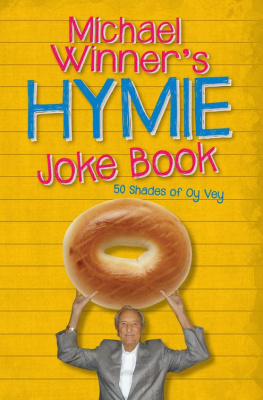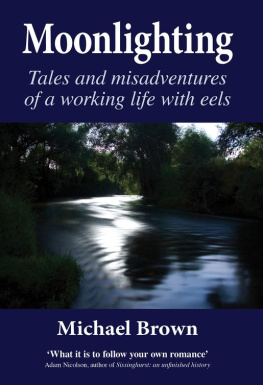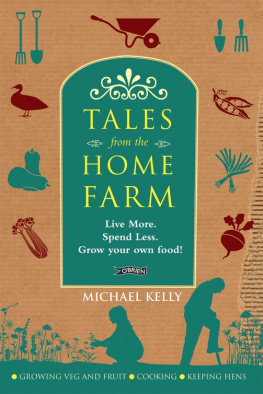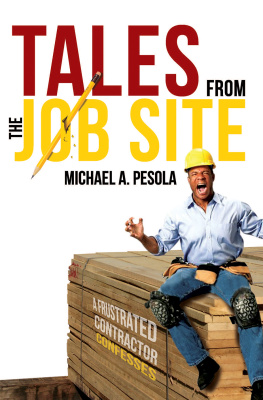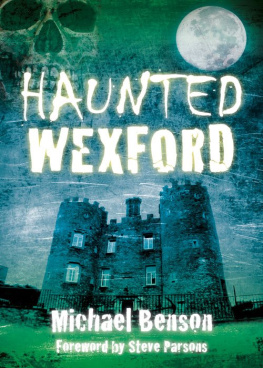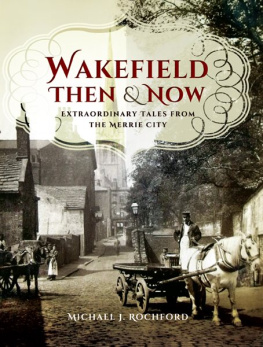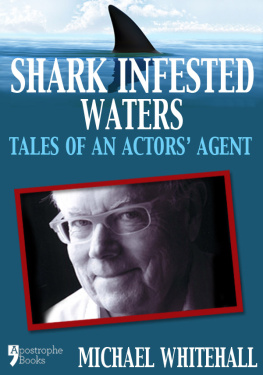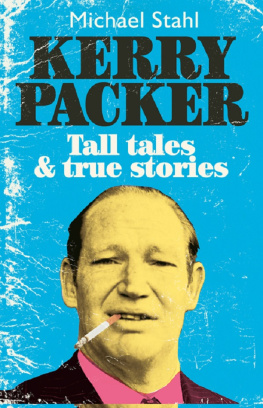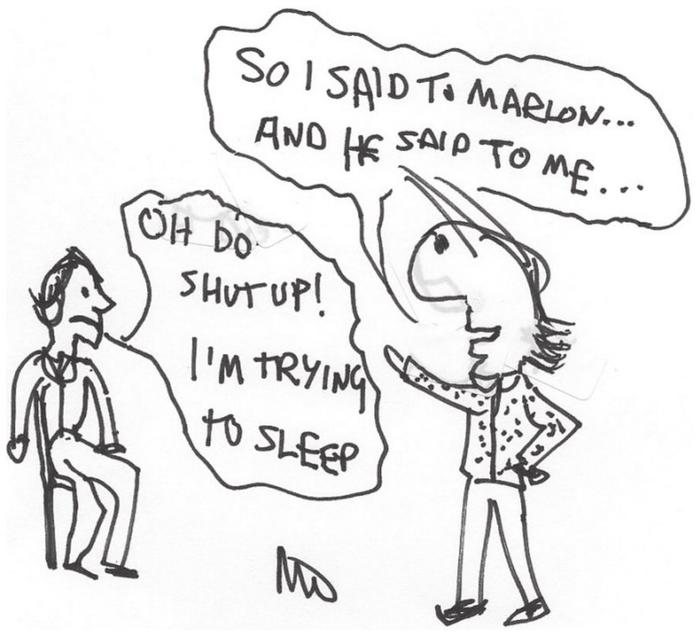This book is dedicated to Geraldine Lynton-Edwards my adorable, ever young ex-fiance.
Wisest thing I ever did was when I managed to bring her back into my life after many years of being apart.
My powers of persuasion surprised even me
but they worked!
Whoopee!
Then things got even better.
On 19 September 2011 we got married!
T ales I Never Told! is a rather frightening title! It means that I have to be absolutely certain that every story Ive put in this book has never been told anywhere, not in the sewers, not in skyscrapers, not on aeroplanes, not in any known or unknown society that exists on any planet. I could not put my hand on my heart and swear that was true because my memory as to what Ive said where is not totally infallible. I have checked through other books I have written, particularly my autobiography and my last book, Unbelievable!, and as far as I can see, all these stories are absolutely freshly put before the public. If you find one that isnt, or even two that are not, please keep it to yourself. Do not tell anybody. Do not reveal such an embarrassing matter that could place me in public ridicule; a position Ive been in for so long it wouldnt make much difference anyway!
The wonderful thing about stories is that we all tell them every day of our lives. We tell about what Mrs Smith the neighbour did, or what Harry Bloggs our uncle did or what some other idiot did. We relish the details, often rather obscenely, if they are details that show particular distress. Theres always a certain delight in other peoples misfortunes . It can be called gossip. It can be called passing information. It can be called commenting on life around us.
Life around me has largely been both eventful and full of very famous people. Some people, and I object to them strongly, say that I am a name-dropper. We all drop names. You drop names of the people you know or who your acquaintances know because they are people in your daily life. If I talk about people in my daily life, many of whom happen to be legendary or at least famous, thats because theyre in my daily life. What am I supposed to do? Not talk about them? Go down the road to find someone I dont know at all and say, What is your name?, have a long conversation and come back and gossip about it? That would be too much to bear for me and the person that I was talking to.
There are many stories that I have not told, or at least only ever told to a very limited audience of friends, and many of these friends appear in this book. There are also a great many stories I have not told at all and still cannot tell because they are too revelatory about famous people I greatly like and who are alive.
So in a way, this is a book of gossip. Gossip is sometimes used as a word indicating shallowness or an inability to talk about higher and more intellectual matters. This is ridiculous ! We all chat about our daily lives. If we wish, we talk about art, life and other intellectual matters. I am going to relieve you from the tedium of hearing me talk about art, life and intellectual matters although, believe me, I am capable of it. This book is meant as a bit of fun to while away hours that otherwise might be less cheerful.
The second part of the book is a catch-up for you on the last year or so of reviews in the Winners Dinners column of the Sunday Times. There are people who say Im a food critic. That is far too grand a title for what I do. I consider myself a humour writer (that could depend on your sense of humour!) who writes stories about his time in restaurants and other places. I am certainly not a food expert. But having had the good fortune to be born to reasonably well off parents, I ate in the finest restaurants from around the age of five. Eventually, unless youre a total moron (which I am on occasions), you learn by continual tasting what is good and what is not. I write as an ordinary punter. I go to restaurants. I pay for every meal. If they refuse to give me a bill, I argue and go on a bit and if they still decline, then I give a large tip which I believe to be the equivalent of what I would have paid for the meal. That tip goes in to what is called a tronc, which is divided among all the waiting staff, and possibly cloakroom staff, and others in the restaurant. So I do my bit for humanity!
We also have in this book the Winners Dinners Awards for 2011/12. These are unique in the history of awards. They attract the most marvellous people to present them. Last year it was Sir Michael Caine, Lord Andrew Lloyd Webber and Barbara Windsor. The only trouble was I left the awards at home so they couldnt actually present anything! They just told people what theyd got and later one of my staff rushed back to the house and got the awards and handed them out to those who were there. We got through some twelve awards in fourteen minutes. Probably (in fact definitely ), an all-time record for the handing out of awards which is normally done by some boring head of a company at a dinner that goes on forever. The Winners Dinners Awards are handed out at a champagne reception at the Belvedere restaurant and some very meaningful people are in the audience; last year we had Sir Tim Rice and Chris Rea, to mention but two.
I have never taken food writing too seriously. Ive never taken life with total seriousness because it is so ridiculous, whats the point? But I have enjoyed it, as I hope you will enjoy this book, which reveals episodes in my life.
O ne of my greatest creations, rather like she who rustled up Frankensteins monster, is Arnold Crust. When I was working on a column called In London Last Night for the Evening Standard in the mid-1950s, we needed someone to make humorous remarks about the hundreds of debutantes , most of whom were not exactly bright. So Jeremy Campbell, the editor, and I invented a girl debutante called Venetia Crust. I also invented a father for her called Arnold. Arnold first appeared in the press at a restaurant owned by Tommy Yeardye who later married Diana Dors. Tommy was an irrepressible businessman, had previously been a stuntman, later became rich as a property dealer and had a considerable stake in the Vidal Sassoon brand. He also put money into the business of Hackney-based Malaysian shoe designer, Jimmy Choo. Tommys daughter ran the business and it became an enormous success.
In those days Tommy was grovelling about. He opened a basement restaurant called The Paint Box. The idea was that people would eat and at the same time have an easel and oils and paint naked girls who were littered around the room. I guess I would have been asked to the opening, or some time later. It was there that Arnold Crust was born. He was seriously stated in the Evening Standard (written by me!) to have been present and painted a picture called Trauma with a stirrup pump. The 1950s were a very fun time!
I was so thrilled at having invented Arnold Crust that I used him again and again. I edited nearly all my own movies myself, sitting at the machine which in those days ran celluloid through something called a Movieola. I marked the film with a white wax crayon, cut the film myself and stuck it together with Sellotape. Thats how editing was done before digital machines came in. Since I was already credited on most of my movies as producer, director and, frequently, as writer as well, I thought that to also have a single screen credit as editor was a bridge too far. So on most of my movies it says Editor, Arnold Crust. Arnold has had some very good reviews, often better than the film in general. It was many years before


